Inspirations and Anti-Inspirations
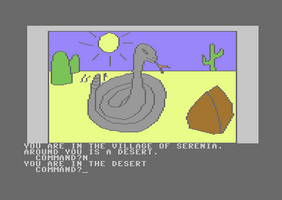
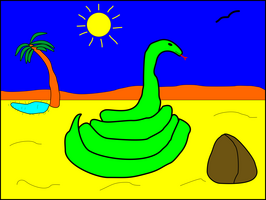
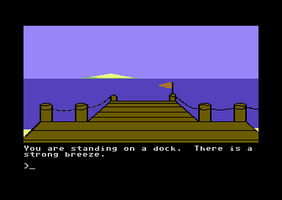

Today, I want to talk a bit about some games that inspired (or anti-inspired) Ace Blackring. When you play, it will be clear that there are many inspirations and references to all kinds of games, but there are two that I feel really drove the game's design: The Wizard and the Princess, and Dark Lord.
The Wizard and the Princess was an early Sierra graphical text adventure. It was later retconned into the King's Quest world. It's reportedly a game about a wizard and a princess, but you wouldn't know it by playing. That's because all you're ever going to see is an empty town, a giant rattlesnake, and an endless desert maze full of scorpion infested rocks. There are rumors of a chasm somewhere, but you've never seen it, and certainly no one's gotten past it.
I spent many hours playing Wizard and the Princess in my youth and never made it out of the desert. I only made it past the snake once or twice, out of sheer luck. It would be easy to chalk that up to inexperience and age, that perhaps I was playing a game far beyond my skill level, but no. Revisiting it now, it's clear that W&P is a flatly terrible game. It's easy to try to excuse its flaws because it was an early game and they hadn't worked out principles of good adventure games yet, but it should have been evident that many of the things it does are not remotely fun, even at the time. And worse still, it's nonsensical.
You start out in the town of Serenia. It looks like an old west town: False fronts and cacti. It seems like it should be a hub to start your adventure. Maybe go to the saloon and hear the story about the princess being kidnapped, maybe see a wanted poster on the Sheriff's door, maybe have a showdown at high noon before you leave. But no. There's no one here, there's nothing to do. It's an empty town, with no indication of where anyone is, why you're here, where to go, what to do, or even any hint that there's a wizard and or a princess.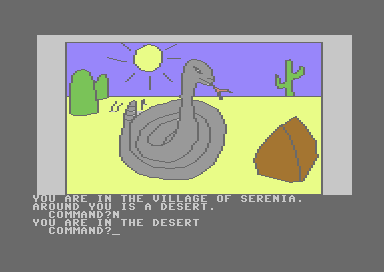
So, you naturally go north. Big rattlesnake! How exciting! What do I do with a big rattlesnake? As with most games, you automatically assume that any creature is a threat, so let's try to kill it. You type "KILL SNAKE", and the game responds "WITH WHAT?" Hmmm... Well, what do I have? Inventory says I have water, bread, a knife, and a blanket. The knife sounds promising. "KILL SNAKE WITH KNIFE". The game again responds "WITH WHAT?". Um, I already told you, kill the snake with the knife. Maybe the parser doesn't accept that complex of a command, so try it in pieces. "KILL SNAKE" ... "WITH WHAT?" ... "KNIFE" Hooray, the rattlesnake threat is vanquished and I can- wait, what's that say? "I DONT KNOW HOW TO KNIFE SOMETHING". You... What? You give me a snake and you give me a knife and you don't even know how to let me kill the snake with the knife? Not even a line about how the knife doesn't work or how the snake bites you when you strike. It just doesn't know what I'm talking about. Trying other commands reveals that "USE KNIFE" works, and you get a message about how the knife isn't big enough to kill the snake. How small is this knife or how big is this snake...? Okay, anyway, so that's not the right solution. Maybe it wants a non-violent approach? I have a blanket, maybe I can just cover up the snake? "USE BLANKET" ... "NO WAY". Several guess-the-verbs later, it's clear that the blanket isn't the way to go, either.
Okay, I've only been in two rooms so far, let's explore around. You head east, you head west, you head south... No matter which way you head, it's what appears to be the same desert room over and over. Eventually, you either hit a place where you "Can't go in that direction" anymore, or you end up back at the snake or the town. You quickly find that directions are pretty much meaningless, because you are "lost in the desert". If you start from south of the town, then go west, south, east, and north twice, you should end up back at the town, but you end up at the snake. While there may be a defined web of directions, there's not enough to go on and it seems pointless to map. The only difference in each room in the desert is that some of the rooms have a rock and some don't. While the rock moves around the room, its appearance is always the same. Okay, so can I take the rock? Nope! There's a scorpion behind it that kills me when I try. Maybe take a different one? Another scorpion! So, all the rocks have deadly scorpions behind them. Let's try to kill the scorpion! "KILL SCORPION" It stings you and you die. Good thing I have a knife, right? "USE KNIFE" ... "NO WAY. Blanket? "NO WAY". Step on it, kick the rock? Nope.
Thanks to deaths resetting the game, all the load times between screens, and all the trial and error, at this point, you're probably two hours in and have only really been one place, have encountered neither a wizard nor a princess, and you no longer have any interest in playing this game. The solution, thanks to walkthroughs that are now available, is that you can "LOOK ROCK" and see if there's a scorpion, and that there's one rock in the desert maze that's scorpion free. You can take that rock, and then use that rock to kill the snake. Yay! Your reward is... Another desert maze! This desert maze has more snakes. Some you can scare off with a stick (if you can find it), and one that you have to help to in order to get a magic word, which makes total sense after you went all St. Patrick the Terminator on all rest of the snakes you've encountered. Oh, and the game gets worse from there, but I won't get into all of that...
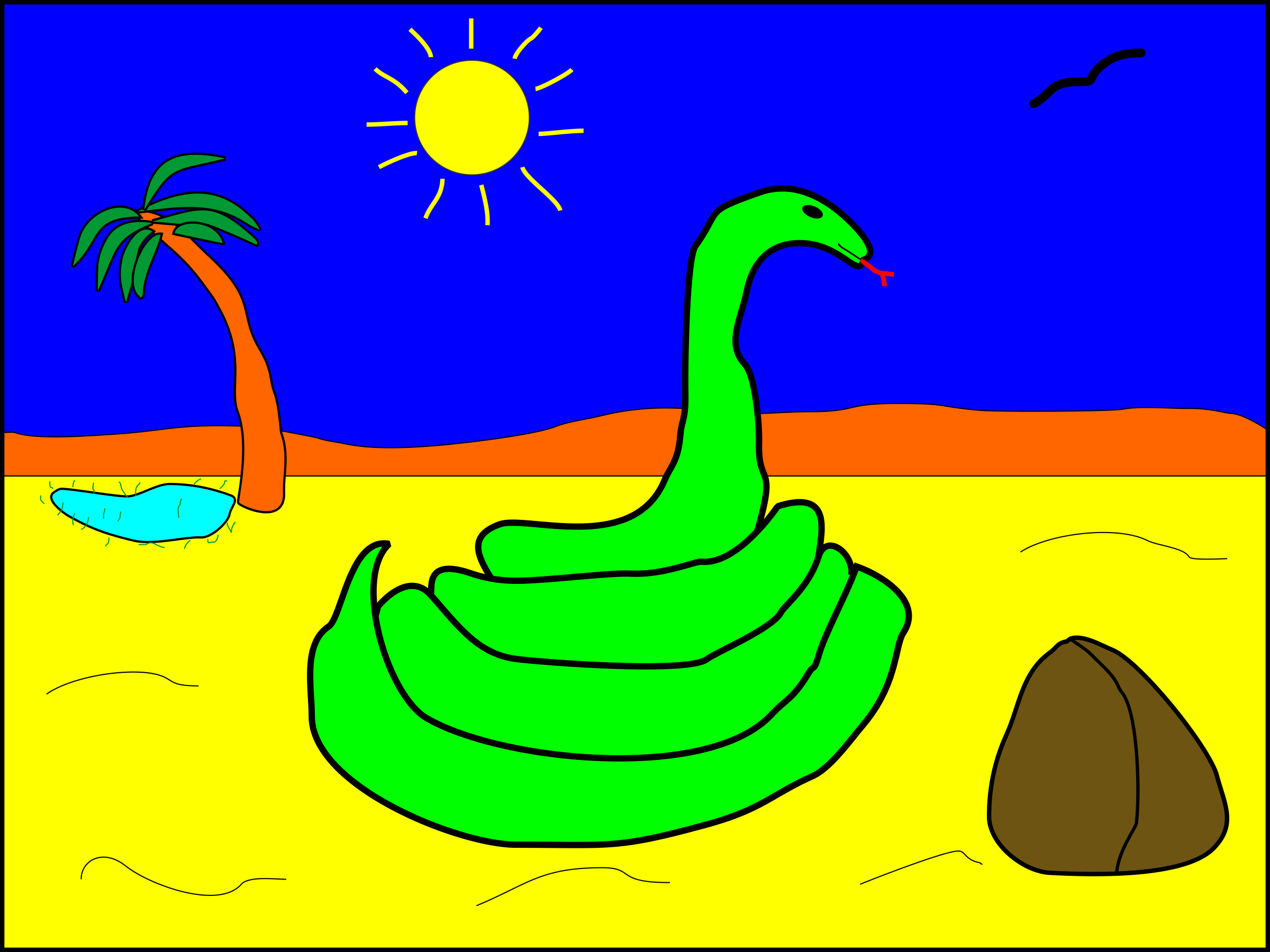
But let me take a step back first. So, you encounter a big snake in the desert. It's just hanging out, it's not eating the townspeople, it's not even threatening you unless you provoke it. Why do you even have to kill it at all? It's in the middle of a wide open desert. Why not just walk around it? It's not like there's a big cliff separating the two desert sections, and the snake is guarding the only path. It's just there in the wide open desert. Walk ten feet to the left, and carry on into the northern desert.
The Wizard and the Princess is an anti-inspiration: A cautionary tale of game design that illustrates things to avoid. I wanted Ace Blackring to be fun, not a frustrating experience fighting against the game itself. So, I set some rules for myself, things that I think are just good adventure game design principles in general:
- No mazes. They're simply not fun. If there's a maze, it should be a puzzle with a solution, not a tedious trial and error mapping exercise.
- No empty areas. A room can be just scenery, but it should be effective scenery. If there's a ghost town, why is it a ghost town?
- No delayed negative consequences/softlocks. You can get screwed over in your very first move in W&P, by drinking the water that you'll need later. Beyond the snake, opportunities for getting stuck increase dramatically. Sierra, like most adventure game creators at the time, loved sticking you in unwinnable situations, especially ones you wouldn't even know about until hours later. That's the video game equivalent of discovering that you built some Ikea furniture wrong when the last panel doesn't fit anywhere. It's not remotely fun. If you want to extend the playtime of the game, make it so that it feels like there's always more to see, don't punish the player and force them to replay the first section twenty seven times.
- Don't train the player to do one thing, only to turn around and randomly expect them to unlearn what you've trained them to do. If all the rocks have scorpions, don't expect the player to keep trying to find a scorpionless rock after five attempts. Give them a different way to deal with the scorpion. (Like, I don't know, throw the blanket over it?) If you teach the player to kill every snake in the desert, don't give them a snake they then have to help, without giving them a reason to.
- Try to build a consistent world. If the desert is a maze, give a reason why it's a maze. As shown in the game, it's a flat expanse of sand, no mountains, no sand dunes, not much vegetation. In a place like that, you'd be able to see the Village of Serenia and the apparently ten foot tall snake for miles. There's no way you could get lost. So throw in a sandstorm or sand dunes or something. Or maybe introduce the evil wizard, and make it a cursed desert. If there's a "King of the Snakes", he should be royally pissed off that I've just been wandering the desert killing his subjects, he shouldn't reward me with a magic spell.
When you play Ace Blackring, my distaste for W&P will be evident...
On the flipside, now I want to talk about a game that was an inspiration. Pretty much all the things W&P did wrong, Dark Lord got right, and more.
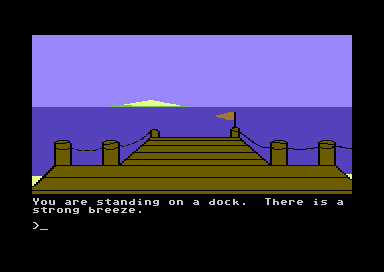
I loved Dark Lord. It had good graphics, including some animations, and even had music. That's what drew me in when I was younger. What I didn't really notice at the time was that it also had a world. It wasn't just a series of disconnected rooms, it was a place that I could visit. The rooms are full of mundane things that can be looked at or interacted with. There are events taking place outside of your control. There's a day/night cycle, and an old man stops working on his boat for the night. As the game progresses, a small village gets burned down. If you're carrying a rat, it reacts to the presence of a cat. None of those are absolutely necessary for the game, but they are touches that make it feel more real. And most importantly, all the rooms in the game feel naturally connected. You can often see another area of the game that you'll reach later. The giant volcano? You go there. The castle on the hill? You go there. The island in the distance? You go there.
Another key feature of Dark Lord was the fact that, as far as I know, you can't lose. You can't get stuck (at least not as a consequence of normal gameplay), you can't die and lose hours of progress. It doesn't punish the player for playing the game. It certainly wasn't the first adventure game to be like this, but it did so years before the LucasArts revolution that brought it mainstream. At the time Dark Lord was developed and released, the adventure game space was dominated by Infocom and Sierra, both of whom seemingly reveled in making their games unwinnable (and profited off the strategy guides by doing so...). There's peril in the game, to be sure. You can get attacked by an unseen dragon, but that just throws you somewhere random. You can jump in lava, but you end up in a bed, wounds treated. Swim in the ocean and a current drags you down the beach. Being forgiving means you're more likely to experiment and discover new aspects of the game, and less likely to give up in frustration.
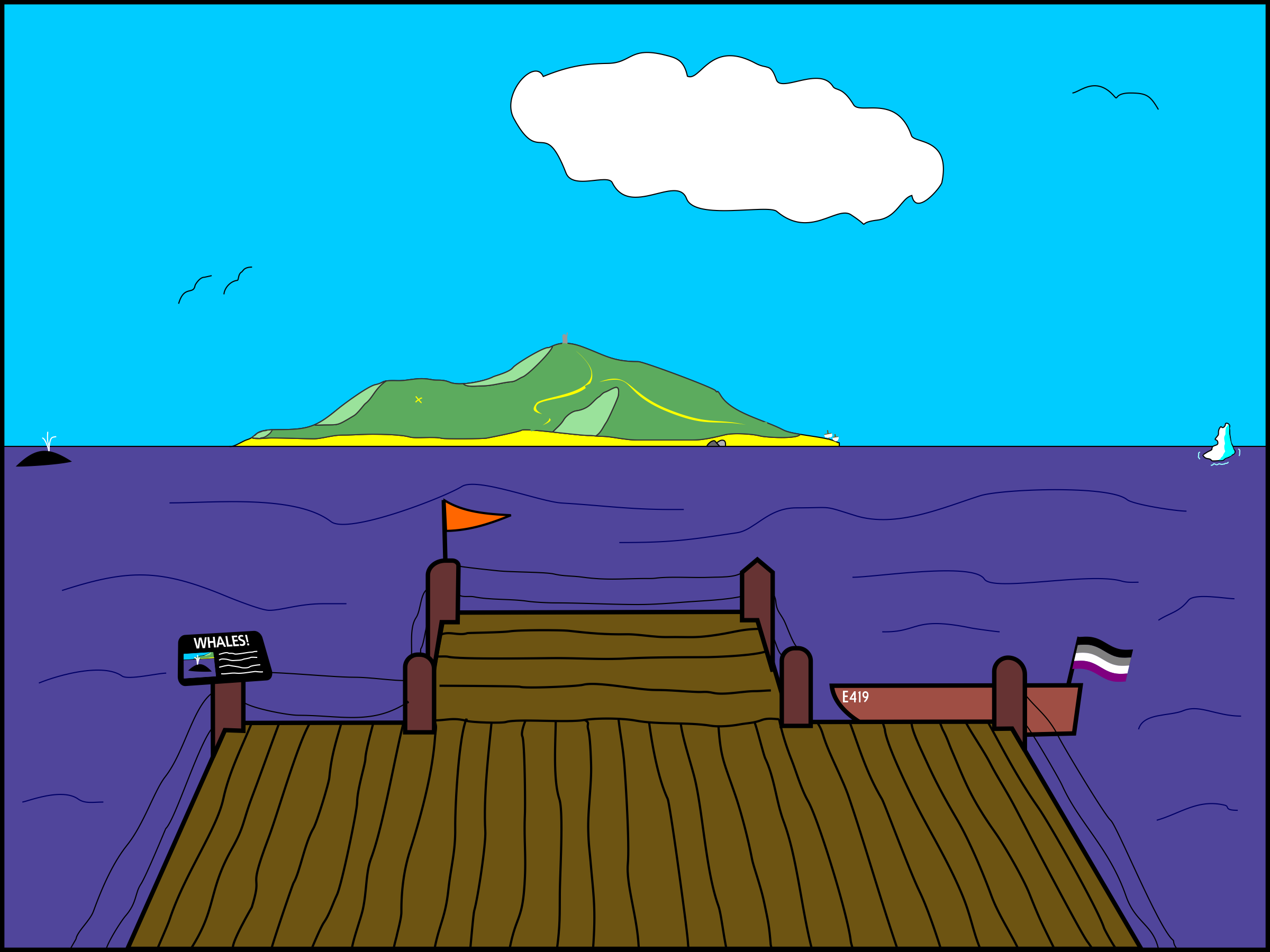
For Ace Blackring, I tried to make a game world that felt connected. In many of the rooms, there's another part of the game visible in the background. And I wanted to make the game forgiving to inspire creativity and experimentation. I didn't go the route of making the game completely death-free. After all, if you jump in lava, you're going to have a bad day. But the key thing is that whatever negative consequences there may be are immediate, and you can UNDO them. So if you want to jump in the lava, go right ahead, then UNDO and not lose any progress! I wish I were able to include animations and music, but unfortunately my skill level and the engine I'm using does not make that possible.
Ace Blackring in the Quest For Garlic Bread
In a land without garlic bread, a new hero emerges...
| Status | Released |
| Author | RedbeardAce |
| Genre | Interactive Fiction, Adventure |
| Tags | asexual, Commodore 64, hi-res, LGBTQIA, Queer, Retro, Text based |
More posts
- Ace Blackring Released!Mar 15, 2023
- Progress Update: The Game Is Now Playable From Start To Finish! (In Theory...)Feb 20, 2023
- Getting There!Feb 11, 2023
- Big PocketsFeb 05, 2023
- Preview Released!Jan 29, 2023
Leave a comment
Log in with itch.io to leave a comment.